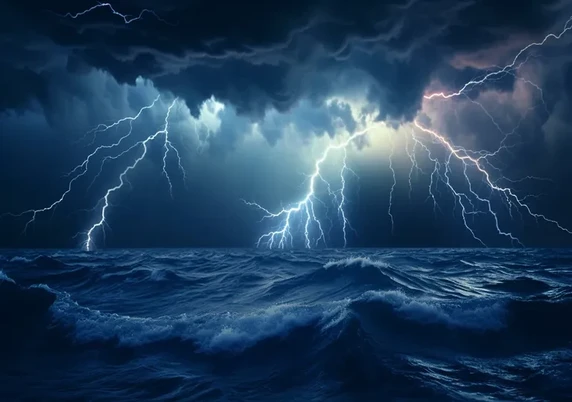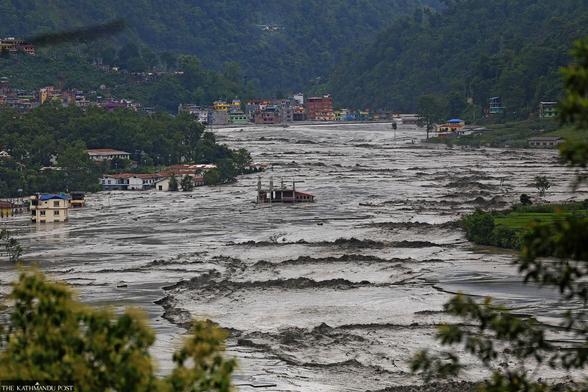Mapping Current And Future Flood Exposure Using A 5 Metre Flood Model And Climate Change Projections [Vancouver, B.C., Canada]
--
https://doi.org/10.5194/nhess-24-699-2024 <-- shared article
--
#GIS #spatial #mapping #climatechange #hazards #naturalhazards #flood #flooding #innundation #disaster #risk #management #planning #floodhazardmapping #Vancouver #BritishColumbia #Canada #highresolution #scenarios #builtenvironment #coast #coastal #coastalengineering #fluvial #pluvial #stormsurge #engineering #model #modeling #spatialanalysis #spatiotemporal #policy #urbanplanning #regulatory #regulations #highresolution
#pluvial
Se conoce como el #evento #pluvial de #Carnian, que tuvo lugar durante el Carniense, y se manifestó en forma de #lluvias torrenciales que azotaron varias regiones del mundo, desde los trópicos hasta las latitudes más altas, prologándose durante la friolera cantidad de dos millones de años.
Este #diluvio continuo tuvo grandes #impactos en los #paisajes terrestres, provocando inundaciones masivas, cambios en los cursos de los ríos y la formación de lagos temporales. (...)
In the #warming world, the hot spots of #compound #dry–#hot #extremes mainly lie in #Europe, South #Africa, and the #Amazon, while those of compound #pluvial–#hot extremes mostly lie in the eastern #USA, eastern and southern #Asia, #Australia, and central Africa
https://agupubs.onlinelibrary.wiley.com/doi/10.1029/2022EF003466
random thought about Permian and Triassic climates: To me, the huge ocean Panthalassa seems like a good recipe for huge atmospheric rivers: it was huge, it had lots and lots of warm water, and in warm climate the air could take up a huge amount of water. (This is how I imagine the Carnian pluvials, for example.)
An article about modern atmospheric rivers, for reference:
https://hakaimagazine.com/features/a-river-runs-above-us/
The frequency, intensity and impacts of #pluvial #flooding as recently witnessed in #Braunschweig (Germany) are increasing - even more in a warming #climate
Can #VGI improve confidence in pluvial flood hazard models?
Check out our new paper on testing volunteered geographic information as a source for testing pluvial flood hazard modelling and unveiling deficiencies: https://authors.elsevier.com/c/1hKIlB8ccya3E
Multimodal Multiscale Characterization Of Cascading Hazard On Mountain Terrain [Nepal]
--
https://doi.org/10.1080/19475705.2022.2162443 <-- shared paper
--
#GIS #spatial #mapping #Nepal #pluvial #precipitation #rain #snow #mountain #terrain #water #hydrology #sediment #risk #hazard #himalayas #hazardmitigation #riskmanagement #floods #flooding #massmovement #landslides #geomorphology #engineeringgeology #debrisflows #erosion #economy #infrastructure #publicsafety #model #modeling #prediction #engineering #solutions #hydroclimate #Melamchi #remotesensing #imagery #hydrodynamic #machinelearning #spatialanalysis #spatiotemporal #soil #saturation #sedimentcontrol #extremeweather #cascading #cumulative #environmental #events #impacts #humanimpact
Changing Intensity Of Hydroclimatic Extreme Events Revealed By GRACE And GRACE-FO
--
https://doi.org/10.1038/s44221-023-00040-5 <-- shared paper
--
#GIS #spatial #mapping #water #hydrology #watersecurity #pluvials #flood #flooding #drought #climatechange #events #climate #extremeweather #mitigation #model #modeling #global #remotesensing #gischat #GRACE #GRACEFO #satellite #extremeevents #pluvial #temperature #wet #dry #extremes #intensity #ENSO #surfacetemperatures #climatecrisis #climatezone #spatialanalysis #hydroclimate #spatiotemporal #corrleation #rainfall #precipitation
[some images courtesy of NYT]
Today's "I may be small, but my family will do great things!" not-quite-a-#dinosaur.
#Dromomeron wasn't as tiny as the pen implies (unless that's a really big pen!) but it wasn't large either: about a meter long, of which half was tail, and the whole thing lightly built. You could pick it up and cuddle it, and you know you'd want to.
Probably not on the dinosaurian lineage, but close—one of a number of #avemetatarsalians living in the mid-to-late #Triassic, 220-210 million years ago (mya). Biodiversity had barely recovered from the end-Permian "Great Dying" 250 mya when the climate threw another curveball in the form of the #Carnian #Pluvial Episode 234-232 mya, a Great Flood that makes "of Biblical proportions" seem kind of cute by comparison. The early Triassic biota had looked more like that of the late #Permian, only vastly sparser: it was later in the period, after the rains washed the remnants away, that dinosaurs and their close relatives began their rise.
Into this relatively empty world came Dromomeron and many other avemetatarsalians, all trying to fill open niches along with the crocodilians to round out the archosaur family tree. Only the dinosaurs and pterosaurs succeeded in the long term, but many others had a good run: the Dromomeron genus contains three named species and there were probably more.
Like all the rest, it wasn't a "failure" or a "dead end," except in the sense that everything is a dead end eventually. See it now not as bones frozen in rock, but a thriving animal, warm and active and alive. We can only hope to leave such a legacy.
(Art by Gabriel Ugueto. If you don’t know his work, you should.)

